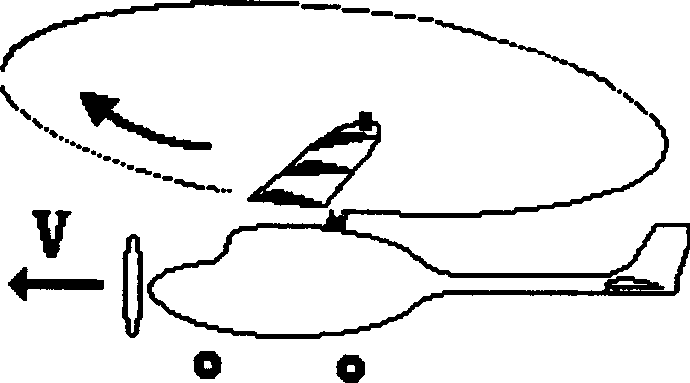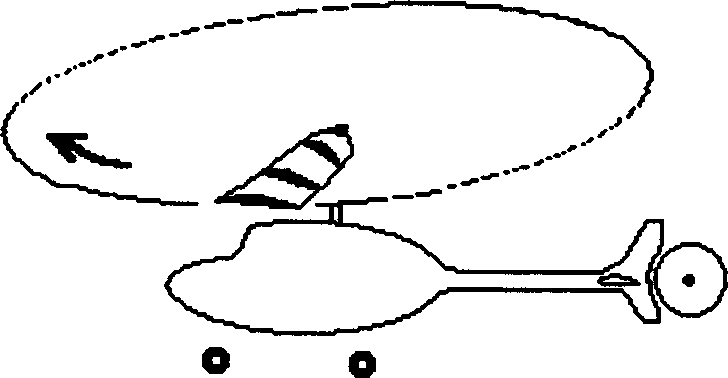Gyroplane
A rotorcraft and rotor technology, applied in the field of aviation aircraft, can solve the problems of reduced efficiency, complex power system, and small pitch adjustment range of high efficiency, so as to reduce wear and fatigue loss, large pitch adjustment range, and improve flight safety. Effect
- Summary
- Abstract
- Description
- Claims
- Application Information
AI Technical Summary
Problems solved by technology
Method used
Image
Examples
Embodiment 1
[0104] See Figures 10, 11, 12, and 13-2, a new type of rotorcraft with a crossed double rotor aerodynamic structure, which includes a fuselage 5, a conventional helicopter power system, a main shaft 2 on the upper part of the fuselage, and a horizontal drive propeller 3 of the rotorcraft. Horizontal drive clutch 15, tail 4, etc. The output end of the conventional helicopter power system is the main shaft 2. The upper end of the main shaft 2 is connected to the rotor 1. The rotor 1 adopts a torsion variable pitch propeller. The torsion variable pitch propeller can be adjusted from positive pitch and negative twist to negative pitch and positive twist; Figure 13-2 As shown, it is composed of a variable torque paddle 43, a paddle shaft 26, and an adjusting rod 27. Picture 12 As shown, the aircraft can use the engine 13 in the conventional helicopter power system to drive the positive-pitch rotor 1 at the upper end of the main shaft 2 through the output shaft 12 through the main clu...
Embodiment 2
[0110] see Figure 16-1 , 16-2 , 17, 18, 19, 20, the above-mentioned aerodynamic torsion variable propeller, its tip 43b is additionally provided with an auxiliary wing, and the auxiliary wing is an aerodynamic torsion propeller using tip flaps. There are more twisting groups than "Embodiment 1", and the other parts are the same as "Embodiment 1".
[0111] The auxiliary wing uses the aerodynamic torsion variable propeller with tip flaps. Its purpose is: 1. When it is working in cruising state, it can more accurately control the lift of the tip, and the torque generated by the lift is less than that of twisting the blade. Degree (see Figure 17 Shown in B'). 2. During the power vertical take-off and landing, the tip flaps added at the tip part 43b should be used to increase the lift of the tip part and obtain sufficient negative torque, so that the main part 43a of the blade has a negative twist (see Figure 17 Shown in B). Make it get better aerodynamic effect.
[0112] The auxili...
Embodiment 3
[0115] see Figure 21 The auxiliary wing of the torsion variable pitch propeller mentioned above can use an adaptive wing of the prior art to change the aerodynamic angle of attack of the adaptive wing. The other parts are the same as in "Embodiment 2".
[0116] The adaptive auxiliary wing can also perform the same functions as the tip flaps in the second embodiment.
PUM
 Login to View More
Login to View More Abstract
Description
Claims
Application Information
 Login to View More
Login to View More - R&D
- Intellectual Property
- Life Sciences
- Materials
- Tech Scout
- Unparalleled Data Quality
- Higher Quality Content
- 60% Fewer Hallucinations
Browse by: Latest US Patents, China's latest patents, Technical Efficacy Thesaurus, Application Domain, Technology Topic, Popular Technical Reports.
© 2025 PatSnap. All rights reserved.Legal|Privacy policy|Modern Slavery Act Transparency Statement|Sitemap|About US| Contact US: help@patsnap.com



